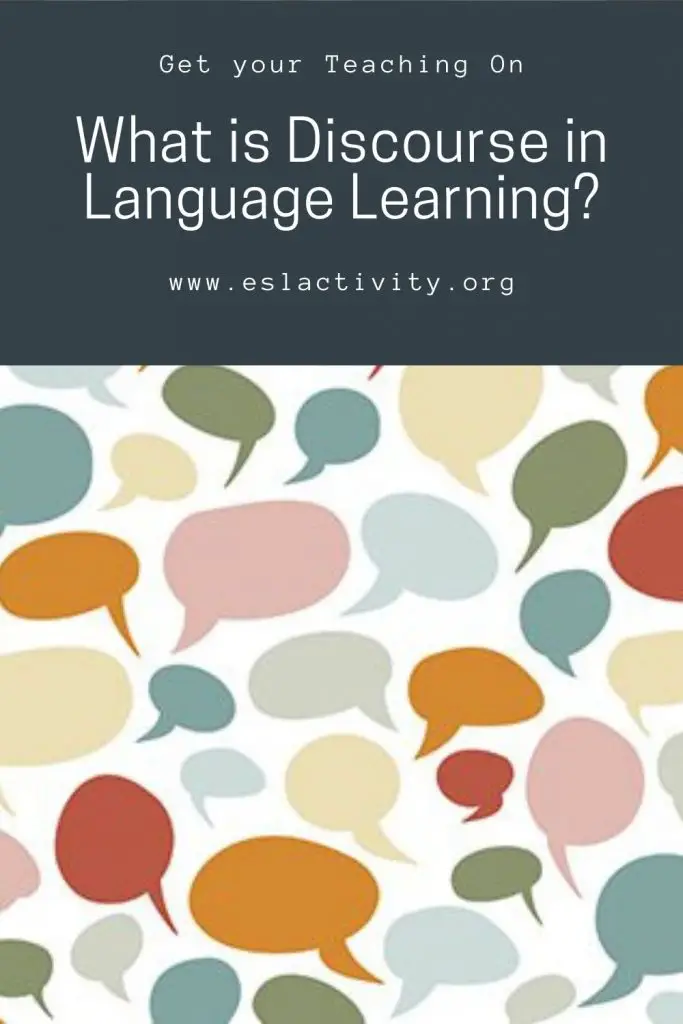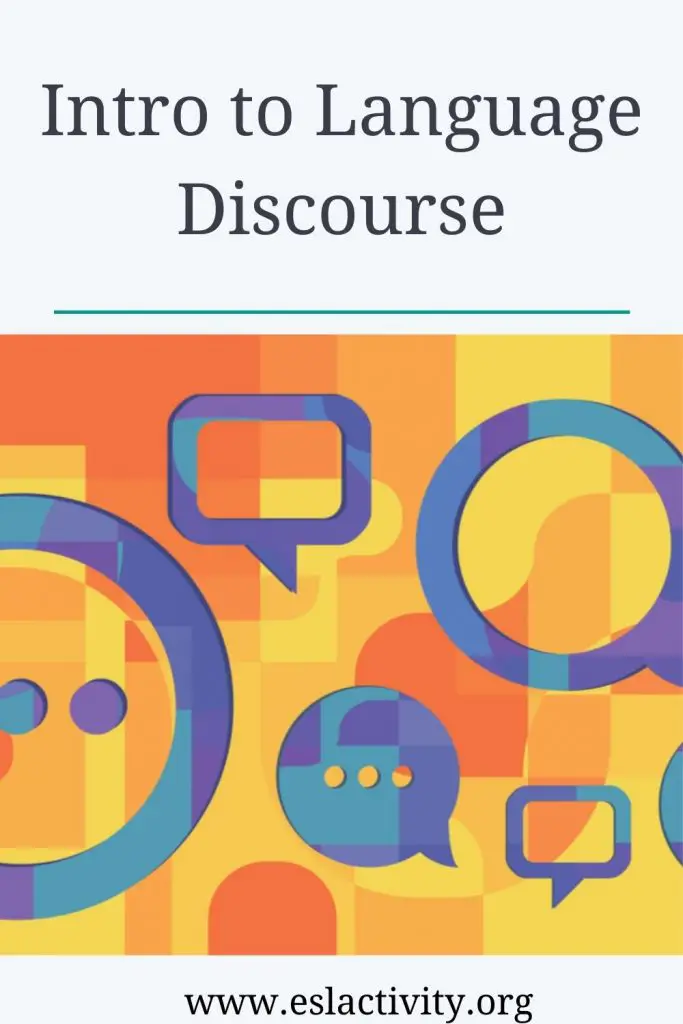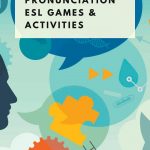Learning a new language is challenging for anyone who isn’t used to speaking the language. This is particularly true when they are not practicing the language regularly. Keep on reading to find out all the details you need to know about discourse when it comes to learning a language. And what exactly is classroom discourse? You’ll find that out too!

Language discourse features
For instance, non-English speakers may not find it easy to learn the language if they don’t speak it often. As a TEFL teacher, you would likely find this to be true. This is the reason why you encourage your students to practice speaking English while in class.
This makes discourse an important component in language learning.
But, you may be wondering what discourse is all about and what role it plays in language learning. Well, you’ve come to the right place. We’ll discuss what it is and how come it’s important in language learning.
Classroom Discourse Definition
Classroom Discourse is the language that students and teachers use to communicate with each other. It can be either oral or written. You can find it in other contexts but classroom discourse has become its own, specific thing in recent years.
What is Language Learning?
Before we talk about discourse, let’s discuss what language learning is so we’ll all be on the same page. Language learning is the act of developing the ability to communicate in a second or a language different from one’s own native tongue.
In the context of a TEFL teacher, language learning is the result of direct instruction on the use of the English language. It basically provides comprehensible input to the students while getting comprehensible output in return. It also involves giving feedback to identify any errors of the students to ensure they make the necessary changes to correct them.
Language learning is not only limited to spelling and grammar since it also touches on content and coherence in the thoughts of the students.
On the part of the students, it’s basically gaining the ability to use a second language as a means of communication. It also allows them to express themselves and understand when they’re spoken to using foreign language.
In order for them to do all of these, they need to practice communicating back and forth, whether it’s through writing or speaking.
This is where discourse comes in when you’re talking about language learning.

Language discourse features
What is Discourse?
What exactly is discourse? It’s a common question that people have! Here’s the easy-to-understand definition.
Do you constantly communicate with a family member or a friend? Do you communicate through writing or do you speak with them? Well, whether it’s through writing or speaking when you communicate with a family member or a friend, you are participating in discourse.
Strictly speaking, discourse is written or spoken communication. Some consider discourse to be a unit of language that is no shorter than a sentence.
But, discourse can also be a single word or two words that communicate a comprehensible concept. Words and phrases like “No Smoking” or “Stop” can also be considered discourse since they communicate a concept or an idea that the receiver or the reader can understand.
For this reason, discourse essentially entails communicating an idea or concept from one person to another. It can be a single word to an entire novel. It is the way language is used to convey meaningful ideas.
Discourse can be viewed in several ways based on context. But, for our purposes, we will focus on this idea in the context of language learning.
What is Discourse in a Lesson Plan?
Discourse in a lesson plan is how the teacher will talk to the students, in terms of giving instructions (can include ICQs), explicit teaching, or examples to the students. In a lesson plan, it can also include the anticipated responses from the students. It’s basically how information and instructions will be conveyed from one party to the other.
Student Discourse Definition
Student discourse is when students are talking, on-topic in a classroom environment. It could be communication with the teacher individually, in front of the entire class, with partners, or in small groups. It is vital to language acquisition and successful language classes don’t happen without it!
- Amazon Kindle Edition
- Smith, Jennifer Booker (Author)
- English (Publication Language)
- 144 Pages - 03/31/2016 (Publication Date)
Discourse in English Teaching
When it comes to language learning, discourse is a system of language that is coherent and has a purpose. While some may say it’s more than a single sentence, as indicated earlier it can be a single word or a phrase that conveys a comprehensible concept.
Studying discourse will give you an idea of the form and function of language within a conversation. It doesn’t focus on small grammatical details but looks into how large units of language give a conversation more meaning.
Taking these points into consideration, we can say that it is necessary for your students to understand the concepts you are teaching. In this case, you need to have a conversation with them in English so they will understand the language better. Moreover, it will also allow them to practice using English in a conversation.
But, as indicated earlier, it is not only limited to speaking since it also includes writing. This makes writing an important component of the learning process. Besides, learning how to read and write in English should be one of the goals you should set for your students.
What are the main discourse features in a language class?
The main discourse features that you might see in a language class are as follows:
- Cohesion (how parts of speech are connected to each other).
- Coherence (how intelligible the utterance is).
- Discourse markers (for example, first, second, finally).
- Body language.
- Speech conventions (common phrases, expected responses).
- Turn-taking in a conversation.

Language and discourse
Importance of Context for Language Discourse
Even as discourse is essential for students to understand a language better by using it, it is also important for teachers to use a proper context when introducing any concept to the students.
The context should allow the students to connect the dots between a word and an item. For instance, when the teacher shows the picture of an apple and the written text “Apple,” the students will see the connection between the written word and the fruit.
Moreover, demonstrating the way the word is pronounced will allow the students to connect the written text and spoken word to the fruit.
This may be a simple way to show the importance of context when it comes to language learning, but you have to start somewhere. You can slowly build from these simple words until you reach a point when it comes in and your student will start to communicate in English be it written or spoken.
Taking all of the points mentioned above, you should be able to see the importance of it when it comes to language learning. It shows that practicing the language through a meaningful conversation will build an understanding of the language among your students in your TEFL class.
FAQs
There are a number of common questions that people have. Here are some of the most popular ones.
What are examples of discourse?
Discourse is when people talk or write ideas about a specific subject. It can be online or in-person, formal or informal.
How do you promote discourse in the classroom?
To promote discourse in the classroom, make it as student-centred as possible. Get students talking in pairs or small groups instead of as an entire class. Use the idea: Think/Pair/Share.
What are the types of classroom discourse?
Some of the main types of classroom discourse include:
- Giving instructions.
- Clarification.
- Checking for understanding.
- Interpreting.
- Expressing ideas or opinions.
- Agreeing or disagreeing.
- Debating.
What are the Different Types of Discourse in a Language Learning Classroom?
In a language learning classroom, various types of discourse are used to facilitate communication and language acquisition. Here are some common types of discourse that occur in a language learning environment:
- Teacher-Student Discourse: This type of discourse involves interactions between the teacher and students. The teacher provides instruction, asks questions, gives feedback, and guides students’ language learning. Students respond to the teacher’s prompts, ask questions, seek clarification, and engage in conversations with the teacher.
- Student-Student Discourse: In this type of discourse, students communicate and interact with their peers. They work collaboratively on tasks, engage in pair or group discussions, ask and answer questions, and provide feedback to one another. Student-student discourse encourages active participation, peer learning, and the practice of language skills.
- Whole-Class Discourse: This type of discourse involves interactions among the entire class. It can include classroom discussions, debates, presentations, or sharing experiences. Whole-class discourse allows students to exchange ideas, express opinions, and engage in collective learning.
- Question-Response Discourse: This type of discourse revolves around asking and responding to questions. Teachers ask questions to assess students’ understanding, prompt critical thinking, and encourage participation. Students respond to these questions, demonstrate comprehension, express their ideas, and engage in dialogue with the teacher or peers.
- Authentic Discourse: Authentic discourse refers to real-life language use that reflects genuine communication outside the classroom. It can involve listening to authentic audio or video materials, reading authentic texts, or engaging in activities that mirror real-world communication situations. Authentic discourse exposes students to natural language patterns, cultural nuances, and various communication styles.
- Oral Discourse: Oral discourse focuses on spoken language interactions. It includes activities such as conversations, interviews, role-plays, debates, and presentations. Oral discourse promotes fluency, pronunciation, and the development of speaking skills.
- Written Discourse: Written discourse involves the production and interpretation of written texts. It encompasses activities such as writing essays, letters, reports, summaries, or participating in written discussions. Written discourse enhances writing skills, vocabulary development, and grammar proficiency.
- Negotiation of Meaning: This type of discourse occurs when students negotiate and clarify meaning during communication. They may ask for clarification, paraphrase, rephrase, or use other strategies to ensure mutual understanding. Negotiation of meaning is common during conversations, discussions, and problem-solving activities.
- Classroom Management Discourse: Classroom management discourse focuses on the teacher’s instructions, directions, and organization of the learning environment. It includes setting expectations, giving procedural explanations, and providing feedback on behavior or classroom routines.
- Nonverbal Discourse: Nonverbal discourse involves communication through gestures, facial expressions, body language, and visual cues. It plays a significant role in language learning as it supports comprehension, aids in conveying meaning, and reinforces verbal messages.
In a language learning classroom, a combination of these types of discourse is essential to create a dynamic and interactive learning environment that supports language acquisition, meaningful communication, and the development of language skills.
Teaching Discourse: Join the Conversation
Do you have any thoughts about student and teacher talk in language learning? Leave a comment below and let us know what you think about it. We’d love to hear from you.
Also be sure to give this article a share on Facebook, Pinterest, or Twitter. It’ll help other language teachers, like yourself who want to know more about teaching languages.
Last update on 2022-07-17 / Affiliate links / Images from Amazon Product Advertising API





